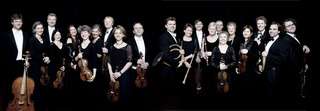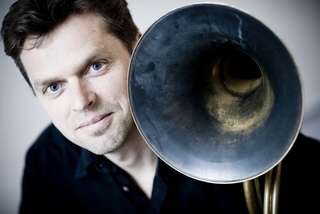|
Back
Fresh Air to Classical Cliché Hong Kong
Hong Kong City Hall Concert Hall
03/14/2010 -
Joseph Haydn: Symphony No. 92 in G major, “Oxford”
Wolfgang Amadeus Mozart: Horn Concerto No. 4 in E flat major, K. 495 – Symphony No. 41 in C major, K. 551, “Jupiter”
Teunis van der Zwart (horn)
Freiburg Baroque Orchestra, René Jacobs (conductor)

Freiburg Baroque Orchestra (© Marco Borggreve)
The concerts on Saturday and Sunday at Hong Kong City Hall were full of surprises. The first surprise came from the repertoire of the performances that early music specialist René Jacobs and the Freiburg Baroque Orchestra (FBO) did not render anything from the Baroque period – all works they chose were from Haydn’s and Mozart’s late compositions. The arrangement of the performances was another surprise. It is astonishing for such an ‘individual’ historically informed orchestra to have a conductor standing in front of the players throughout the concert. It is inevitable to draw comparison between this performance and that by the Amsterdam Baroque Orchestra in last year’s Hong Kong Arts Festival (read here).
Besides the difference in their arrangements, with Mr. Koopman conducting from the harpsichord whereas Mr. Jacobs conducting with a baton (actually he was holding a black pen), the other main distinction between the two were their ‘sound’. From the recordings, one must be able to distinguish the rural and even scratchy strings and the bucolic winds of FBO from other historically informed ensembles.
It was the exquisite woodwinds that remained most impressive and memorable in the two symphonies – the traverso and oboe solos in the Adagio of Haydn’s Oxford Symphony were telling exemplifications. The strings, though without vivid dynamic contrasts we usually hear in most of the interpretations of Haydn’s and Mozart’s orchestral works, were able to bring to life the sheer emotional intensity by rendering the fast movements, such as the Menuetto from both symphonies, with whirlwind pace and crisp articulation.
However, the delicacy of articulation and circumspection of interpretation sometimes came across as preciosity. The sudden pianissimo and grandiloquent crescendo over a short phrase may sound too dramatic for ears attuned to more innocent and plainspoken readings of these two classical composers. Most appalling of all was the abrupt slackening of pace in the first movement of Mozart’s Jupiter Symphony. Mr. Jacobs deliberately slowed down the tempo of the music right before the codetta and at the beginning of the development section. It sounded to my ears that this transitional theme was highlighted too artificially. But on the other hand, this unique treatment together with the distinctive ‘FBO tone’ brought fresh air to this classical cliché.

T. van der Zwart
The Mozart Fourth Horn Concerto interpolated between the two symphonies were presented by the principal horn player of the FBO, Teunis van der Zwart, an advocator of the natural horn. In the first movement, Mr. van der Zwart’s command of his instrument was troubled by the burbling tone at extreme ranges and flattened pitch in scurrying runs. It was not until the famous final movement that Mr. van der Zwart got rid of his over-cautious temperament and tried to bring to the surface some Mozartean liveliness and exuberance. Despite the lack of tonal warmth and intimacy we find in the modern horn, Mr. van der Zwart’s ‘natural’ reading showed more interest in underlining the simplicity and innocence of Mozart’s music.
FBO’s website
Danny Kim-Nam Hui
|